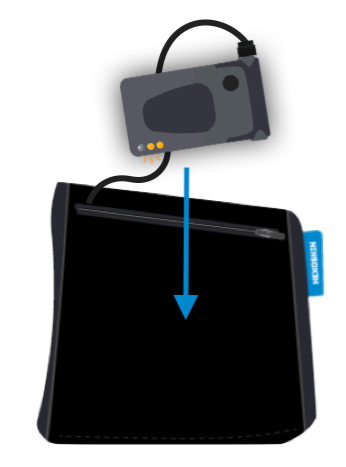Understanding Hexoskin Accelerometer Data (3 Axis)
The 3-axis accelerometer included in the Hexoskin Device measures the acceleration (change in speed over time) on the x, y and z axes.
The axes are present in the following orientations (when viewing the device from the front):
%20copy-png.png?width=277&height=447&name=Hexoskin%20Smart%20Kit%20(Device%20-%20Front)%20copy-png.png)
It is important to keep the Hexoskin device in the same orientation for the duration of the record. There is a reference position used by our algorithms for Sleep position specifically. The reference point is as follows:
- The Device lying on its side
- LEDs facing away from the body (serial number against the body)
- Device Connector cable pointing up

Thus, by keeping the device in a constant orientation, the accelerometer can determine its orientation relative to the Earth. Subsequently, during a movement or displacement, the accelerometer can determine the speed and the direction in which the device is moving.
It is important to understand that, for any given axis:
- a positive acceleration value is an indication of an increase in velocity in that axis
- a negative acceleration value is an indication of a decrease in velocity in that axis
- an acceleration value of 0 is an indication of a constant velocity but does not necessarily equal zero (i.e. velocity may or may not equal 0).
Hexoskin also provides an Activity metric that represents the total intensity of movement on all axes combined. This is the resulting vector of the accelerations measured in the 3 axes according to the following formula:
Activity = (accX^2 + accY^2 + accZ^2)^1/2